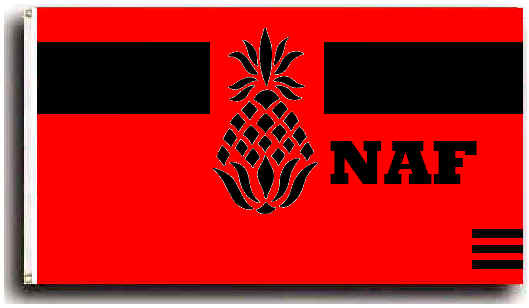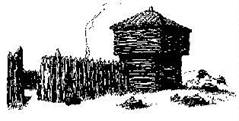|
.....
|
|

BILL
CUNNINGHAM
Captain
- Staff
Writer |
Smoke Signals
Sep./Oct. '10
|
|
|
|
THE WAY WE WERE
By: Bill Cunningham
How
many times have you heard someone say that they were born in
the wrong century, or that when (or if) they have a chance
they will put themselves in the wilderness and live off the
land. Given the opportunity to become a real, honest to
God, mountain man, they are going to jump all over it. They
openly speculate that they can go into the wilderness naked,
without possessions, and come out the other side fully
equipped and fat. The reality of it is that most would simply
never be heard of again. In truly survive or die
circumstances, another individual would have bitten the dust.
Today’s buckskinner, by and large, has never had the
opportunity to learn the useful skills of trades long dead;
skills that would be useful in many ways in the wilderness,
just as they were during the era of the beaver days.
Let’s
consider the situation. The fur trade was populated by men of
diverse backgrounds. There were quite a compliment of farmers.
Men like Isaac P. Rose and David Stuart had their beginnings
on farms. Before they entered the fur trade they had learned
much about woods craft, trapping, hunting, fishing; handling,
training, and driving farm animals and fixing and repairing
whatever broke or needed replacement.
Eighteenth
and nineteenth century farming, despite today’s fanciful
stories about it, was hard and most farm families earned, at
best, a bare livelihood. Country life often meant fourteen
hour days. Rocks and stumps had to be removed by brute force.
Animals had to be carefully husbanded. Almost everything that
was needed had to be made on the farm. At an early age boys
learned to make soap, tallow candles, cut nails, square pegs
for round holes, shakes for roofing, hand sawn boards for
building, whiskey for snake bite and ague and to sell. The
list goes on. The things that might have meant a better diet
and therefor a more healthy life, were reserved for market.
Forget the image of roses climbing the gateposts and neighbors
gathered on the porch for iced tea. It just was not the norm!
Mud was a given during the wet times, and dust for the rest.
Animal waste, dirty water from the household chores and on
occasion, dirty bath water in which the entire family had
bathed, was dumped just outside the door and made a stinking
mess that got tracked into the house and outbuildings. In that
muck bred vermin—clouds of flies, ticks, worms and
mosquitoes. Often refuse was dumped near the well where
drinking water came from and as a result so did dysentery,
cholera, and other debilitating sicknesses.
It
is no wonder that the assured pay westering brigades promised
lured experienced woodsmen away from the settlements. Many of
the now legendary
mountain men and traders brought useful skills with them. Some
of the men went out of necessity, sick and tired of staring at
a future that promised only more of poverty and boredom. Some
went for shining times and adventure.
Simeon
Turley was by inclination a stay-at-home man who did little
traveling but was an important figure in the fur trade. On the
farm he had learned how to distill whiskey. By 1832 when he
was 24, he was in New Mexico, married, and a naturalized
citizen of Mexico. He soon had a flour mill and distillery. By
all accounts his whiskey was pretty raw, but it got the job
done. Staying at home most of the time, he hired others to
take his products into the mountains and plains of the fur
trade. Needless to say, he prospered.
As
you probably know, the fur trade drew quite a compliment of
Delaware and Shawnee Indians, often of mixed blood. They were
generally accepted in the trade as white men. Jim Swanock, son
of the Delaware chief William Anderson, was one of them. He
not only understood the white’s technologies, but was well
versed in the basic skills of the Indians. He became a leaders
of parties of mountain men and is much noted in the annals of
the era.
William
H. Vanderburgh attended the Military Academy at West Point.
Later he was trained in the fur trading business by Manuel
Lisa and Joshua Pilcher.
Antoine
“Baronet” Vasquez grew up on a farm. His father went into
the trading business but went broke. Baronet, as Antoine was
called, went to work for the United States Army. In 1806 he
joined Zebulon Pike as an interpreter to travel and explore
the Arkansas and Red rivers. He spoke French, English,
Spanish, and several Indian languages. He also filled in as a
hunter and messenger. He became well known and admired, and
was a leader at the battle of Tippecanoe. He was one of the
few to make significant money without being a partner or owner
of a fur trade company.
A
well known name in the fur trade is William Workman. He came
to this country from England in the early 1820s and went to
work with his brother as a saddle maker. A saddler had to be
inventive, adept in the use of cutting knives, pincers, and
hammers. He not only made saddles, but also bridles, harnesses
of all types, and because he purchased the needed iron
articles, leather pieces such as rosettes, as well as trees,
buckles, brass furniture, and various cloths, he needed a good
knowledge of the value and quality of those items.
Cyrus
Alexander learned the tanning trade, shoe-making, milling, and
lead mining, most of them useful skills that would come in
handy as he traveled with the Sublettes, Jed Smith, David
Jackson, Thomas Fitzpatrick (known as Broken Hand), and
Peg-Leg Smith.
John
Ball attended Dartmouth College and formed a liking for
geographers. In 1831 he got interested in Nathaniel Wyeth’s
proposed expedition. Up to that time he had worked as a school
teacher, lawyer, and opened an oilcloth manufacturing
business. But he had a roving spirit. He closed his business
and joined up even though he did not bring much to the table.
James
Bordeaux grew up on a farm, eschewed school, but became a
great hunter and fisher. He was known, at a very young age, as
a fine marksman. He ran off to join the fur trade at the age
of twelve.
James
Kirker, the magnificent business man and Indian fighter from
Ireland who was early on taught the tanning and grocery
businesses. As Bonaparte’s armies threatened Great Britain,
his brother was conscripted into the army. At age 16, Jim was
shipped off to America by his family in order that he not be
conscripted into England’s military as his brother had. In the
Americas, he used his early training to open several successful
businesses, including a grocery. At age 30 he joined up with
Ashley’s first expedition which he quit in disgust after the
fiasco at the Arickaree village. His knowledge of sound business
practices gleaned in his youth from tanning and grocer training
stood him well and he was successful in several locales. But,
eventually he became the dreaded Indian killer, taking scalps
for pay for the governors of New Mexico.
James
Bridger, that larger than life mountain man, was trained as a
blacksmith. By the time he signed up with Major Henry in 1822 he
had acquired many other skills such as teamster and boatman,
which stood him in good stead in his years as a trapper and
guide.
Christopher
(Kit) Houston Carson at fourteen years of age was apprenticed
out to a saddle maker. Probably because he detested that work he
ran away. In 1826 he joined a Santa Fe bound caravan and in the
ensuing few years went up and down the trails to Santa Fe and
Taos, hired as a teamster. In 1828 he left Taos with Ewing
Young’s first trapping venture to California. Young took a
liking to Carson and by the time they returned to Taos he had
taught Kit the secrets of beaver trapping and skills of survival
in a tough country at a tough trade. From there Kit Carson went
on to become a living legend.
There
were many other trades involved in the settled areas where
larger populations dwelt. Each trade had its own requirements of
knowledge and experience—some of which came in handy in the
mountain west, and some for which there was absolutely no need.
Jobs
like brick maker, rope maker, weaver, pin maker, needle maker,
wire drawer, paper maker, printer, bookbinder, calico printer,
tin plate worker, button maker, glass blower, while useful in
the cities and towns, didn’t have much application along
beaver rich streams and mountain fastnesses.
There
were some trades whose skills may once in a while have been
tapped by western travelers . Jobs such as basket maker,
carpenter, cooper, sawyer, wheel wright, ship wright,
apothecary, tallow chandler, shoe maker, brewer and cutler would
have had application among the caravans and boats going to and
fro..
When
the disparity in wages between what a skilled worker in the
settlements might make, and the near fortunes that could,
perhaps, be reaped in the fur trade, it is little wonder
that men of an adventurous spirit were drawn to the dangers of
the western wilderness.
During
the heyday of the fur trade many tradesmen who went out with the
brigades, spent a year or two with them, then returned to their
families and former occupations. It appears that a majority of
those who had no particular trade preferred to remain in the
mountains and prairies. When the beaver business tumbled, many
then turned to a new trade for which they had developed unique
skills—guides and hunters. Others, like Joe Meek, settled in
Oregon or California and got by quite well as farmers, real
estate speculators, lawmen, and traders. And some, unable, for
whatever reasons, to fit into the civilized business world,
finished up as hunters, guides, prospectors, or interpreters and
scouts for the army.
 
___________________________
|